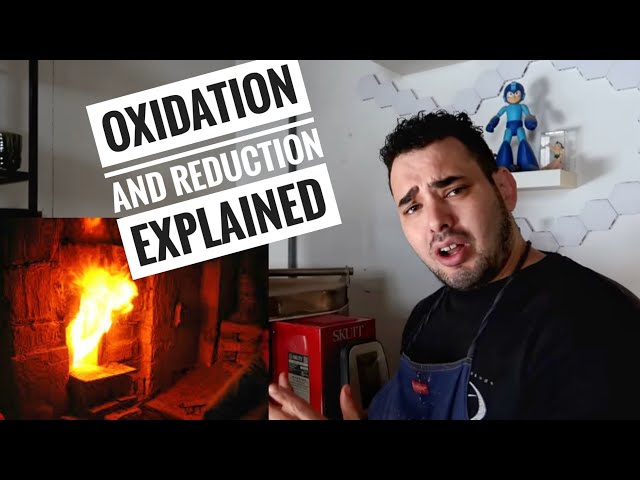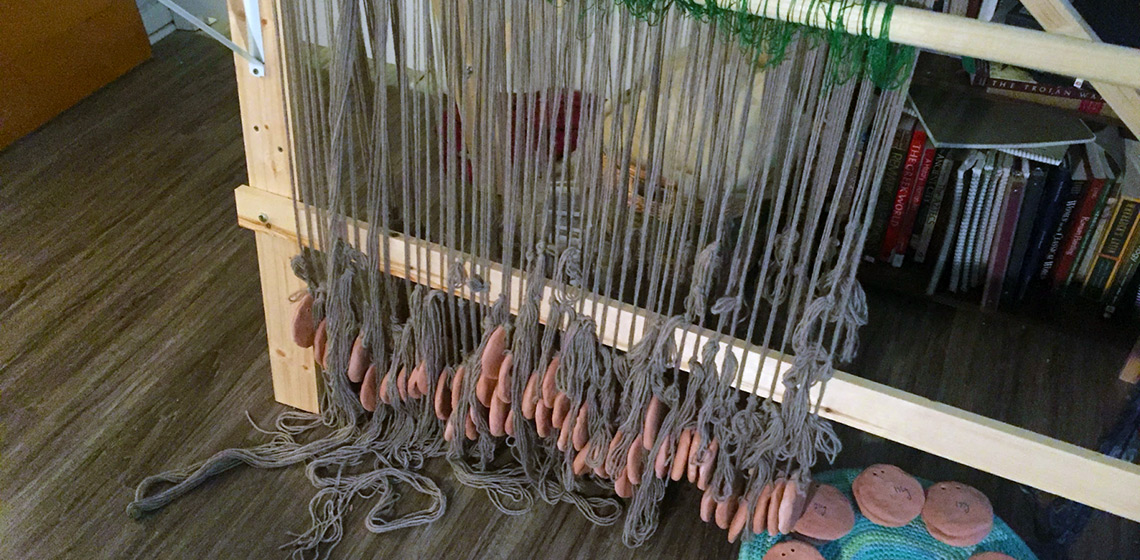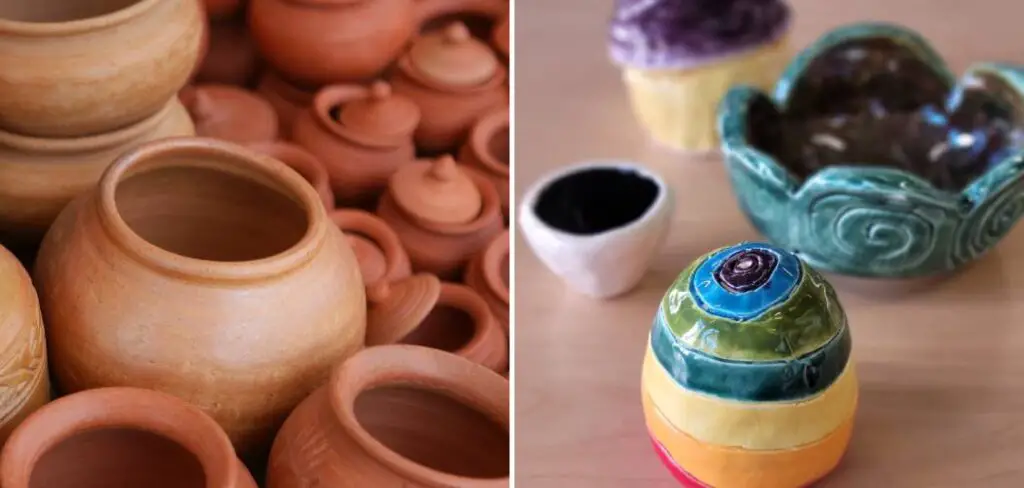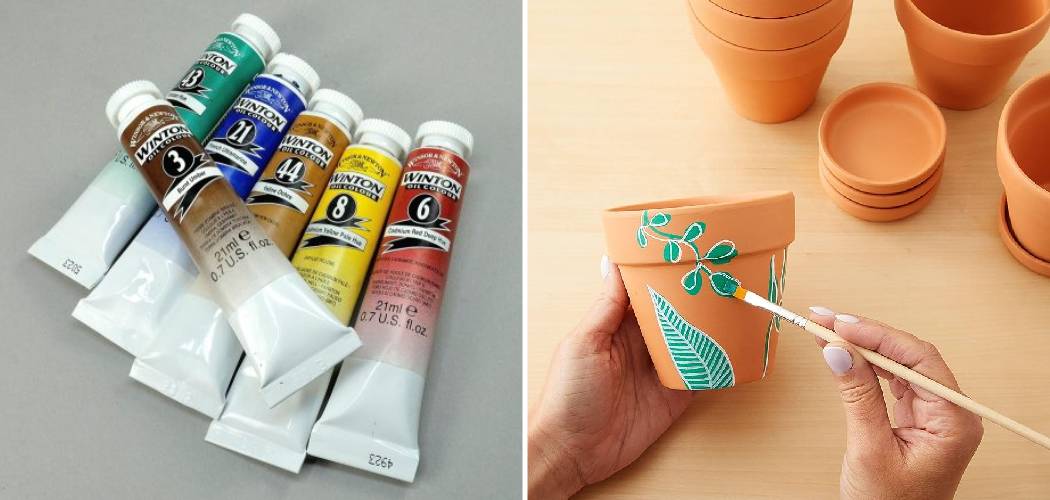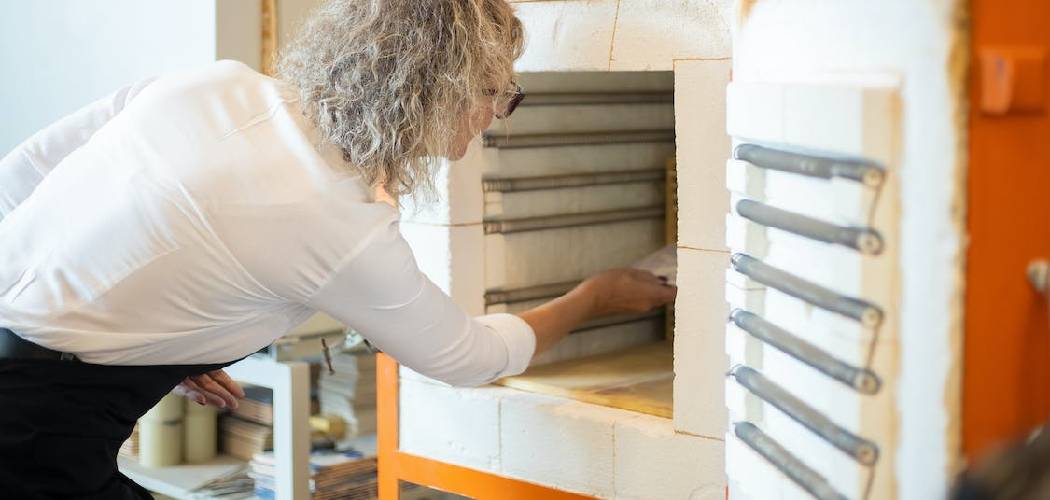Reduction firing is used to alter the chemical composition of glazes and clays. It achieves unique color effects and textures.
Reduction firing is a technique primarily employed in ceramics. It involves reducing the amount of oxygen in the kiln during the firing process. This method changes the chemical composition of the materials, resulting in distinct and often unpredictable colors and textures.
Potters and ceramic artists favor reduction firing for its ability to produce rich, varied, and sometimes metallic finishes. This technique is essential for achieving specific aesthetic qualities that cannot be replicated through oxidation firing. Understanding reduction firing is crucial for anyone aiming to master the art of ceramics and achieve unique, high-quality results.
Table of Contents
Introduction To Reduction Firing
Reduction firing is a fascinating technique used in ceramics. It alters the properties of clay and glaze. This method is important for creating unique pottery effects. Let’s dive into its historical background and basic principles.
Historical Background
Reduction firing dates back thousands of years. Ancient potters in China first used it. They discovered it by accident in their kilns. Early craftsmen noticed changes in their pottery’s color and texture. This led to the development of reduction firing techniques.
In the Ming Dynasty, reduction firing was refined. Potters used it to create beautiful blue and white porcelain. The technique spread to other cultures over time. Today, it remains a popular method in modern ceramics.
Basic Principles
Reduction firing involves controlling the oxygen levels in a kiln. During firing, oxygen is reduced inside the kiln. This causes the clay and glaze to react differently. The result is unique colors and textures on the pottery.
The process starts by loading the kiln with pottery. The kiln is then heated to a high temperature. At a certain point, the oxygen supply is restricted. This creates a reducing atmosphere inside the kiln. The chemical reactions in this atmosphere cause the desired effects.
| Step | Description |
|---|---|
| 1 | Load the kiln with pottery. |
| 2 | Heat the kiln to a high temperature. |
| 3 | Reduce the oxygen supply inside the kiln. |
| 4 | Monitor the chemical reactions for desired effects. |
The reduction atmosphere changes the glaze’s appearance. It can produce rich, varied colors that are impossible in an oxygen-rich environment. This technique offers potters greater control over their final product’s look.
To achieve the best results, potters must carefully monitor the kiln. They need to control the temperature and oxygen levels precisely. The process requires skill and experience. But the unique effects make it worth the effort.

Credit: potteryclaythailand.com
Key Benefits
Reduction firing is a popular technique in ceramics. It involves reducing the oxygen in the kiln. This process offers many benefits. Let’s explore the key benefits of reduction firing.
Enhanced Colors
Reduction firing enhances the colors of the ceramics. The lack of oxygen causes unique chemical reactions. These reactions result in rich and vibrant colors. Potters can achieve deep reds, blues, and greens. The colors are more intense and varied than in oxidation firing.
Unique Textures
Reduction firing creates unique textures on ceramics. The reduced oxygen affects the clay and glazes. This process leads to interesting surface effects. You can see changes in glossiness and matte finishes. The textures are often unpredictable and one-of-a-kind.
| Benefit | Effect |
|---|---|
| Enhanced Colors | Rich and vibrant hues |
| Unique Textures | Interesting and unpredictable surface effects |
- Reduction firing provides a broader color palette.
- Unique textures add character to ceramic pieces.
Materials And Equipment
Reduction firing is a fascinating technique in ceramics. It requires specific materials and equipment to achieve the desired results. This section covers the types of clay and essential tools needed for reduction firing.
Types Of Clay
Choosing the right type of clay is crucial. Here are some popular options:
- Stoneware Clay: Ideal for reduction firing due to its durability.
- Porcelain Clay: Provides a smooth finish and is excellent for fine details.
- Raku Clay: Known for its thermal shock resistance, perfect for quick firing processes.
Each type of clay reacts differently in a reduction atmosphere. Stoneware and porcelain are most commonly used due to their strength and versatility.
Essential Tools
Reduction firing requires several essential tools and equipment:
| Tool | Purpose |
|---|---|
| Kiln | Heats the clay pieces to high temperatures. |
| Gas Burners | Provide the necessary fuel for the reduction atmosphere. |
| Thermocouple | Measures the temperature inside the kiln accurately. |
| Protective Gear | Ensures safety during the firing process. |
Each tool plays a vital role in the reduction firing process. The kiln and gas burners create the reduction atmosphere needed for the reaction. The thermocouple helps monitor the temperature. Protective gear ensures the safety of the ceramic artist.
Understanding these materials and tools is essential for successful reduction firing. Proper selection and usage can significantly impact the quality of the final ceramic pieces.

Credit: ceramicartsnetwork.org
The Process Explained
Reduction firing is a unique ceramic firing process. It alters the colors and textures of pottery. This process involves specific steps and stages. Each stage is crucial for achieving the desired results.
Preparation Steps
Before starting reduction firing, certain preparations are needed:
- Choose the right clay: Not all clays are suitable for reduction firing.
- Apply glazes: Use glazes that respond well to reduction environments.
- Load the kiln: Arrange pottery pieces in the kiln carefully.
Preparation ensures the best outcomes in the firing process.
Firing Stages
Reduction firing involves multiple stages:
- Initial Heating: The kiln temperature is gradually increased.
- Reduction Atmosphere: The kiln is sealed to limit oxygen. Fuel, such as wood or gas, is added to create a reduction atmosphere. This stage changes the clay and glaze colors.
- Cooling: The kiln is slowly cooled down. This allows the pottery to stabilize and prevents cracking.
Each stage is essential for achieving unique and vibrant pottery pieces.
Common Techniques
Reduction firing is a popular method in ceramics. It creates unique finishes on pottery. There are several techniques used in reduction firing. Each method offers distinct results. Here are some common techniques:
Raku Firing
Raku firing is a rapid firing process. It originated in Japan. The pottery is heated quickly to about 1800°F (982°C). It is then removed while still glowing hot. The piece is placed in a container with combustible materials. This can include sawdust, newspaper, or leaves. The materials ignite, creating a smoky atmosphere. This reduces the oxygen around the pottery.
Raku firing produces unpredictable and unique finishes. The glaze can crackle, and the body can darken. The process is known for its dramatic results. It is often used for decorative pieces.
| Step | Description |
|---|---|
| 1 | Heat pottery to 1800°F (982°C). |
| 2 | Remove while glowing hot. |
| 3 | Place in combustible materials. |
| 4 | Allow materials to ignite and reduce oxygen. |
Salt Glazing
Salt glazing involves adding salt to the kiln. The kiln must be at high temperatures, around 2300°F (1260°C). The salt vaporizes and reacts with the silica in the clay. This forms a glassy, textured surface on the pottery. The process can create orange peel-like textures.
Salt glazing is often used for functional ware. It creates a durable, waterproof finish. The process can also produce interesting color variations. The salt and clay interaction can leave unexpected results.
- High temperature: 2300°F (1260°C)
- Salt reacts with silica
- Forms a glassy surface
- Produces unique textures and colors
Safety Measures
Reduction firing is a popular technique in ceramics. It requires specific safety measures. This ensures a safe and productive environment for everyone involved.
Protective Gear
Wearing the right protective gear is essential. This includes heat-resistant gloves and a face shield.
- Heat-resistant gloves: Protect hands from extreme heat.
- Face shield: Shields face from sparks and hot gases.
- Aprons: Protects clothes and skin from hot materials.
Ventilation Tips
Proper ventilation is crucial in reduction firing. This helps to remove harmful gases.
- Install a ventilation hood over the kiln.
- Ensure the room has exhaust fans.
- Keep windows open during firing.
Good airflow reduces the risk of inhaling toxic fumes. This keeps the workspace safe and healthy.
Challenges And Solutions
Reduction firing is a popular technique in ceramics. It enhances the final product’s aesthetics. But it comes with its own set of challenges. In this section, we’ll discuss common issues and their solutions.
Avoiding Cracks
Cracks are a major problem in reduction firing. They can ruin the entire piece. To avoid cracks, follow these steps:
- Ensure the clay body is well-prepared.
- Dry the piece slowly to avoid stress.
- Use a controlled heating schedule.
Proper drying is crucial. Rapid drying causes uneven shrinkage. This leads to cracks. Use a damp box for controlled drying. It helps the piece to dry evenly.
A slow heating rate is also important. Rapid heating creates thermal shock. This can cause cracks. Use a kiln with a programmable controller. It ensures a gradual increase in temperature.
Preventing Glaze Defects
Glaze defects can spoil the appearance of your ceramics. To prevent glaze defects, consider the following:
- Choose the right glaze for reduction firing.
- Apply the glaze evenly.
- Ensure the kiln atmosphere is consistent.
Choosing the right glaze is vital. Some glazes are not suitable for reduction firing. They may bubble or blister. Always test your glaze before applying it to your final piece.
Applying the glaze evenly is also important. Uneven application can lead to defects. Use a spray gun for uniform coverage. It ensures a smooth and even coat.
Maintaining a consistent kiln atmosphere is key. Fluctuations in the atmosphere can affect the glaze. Use a digital pyrometer. It helps monitor and maintain the kiln environment.
Notable Artists And Works
Reduction firing is a technique that has influenced many artists. This section highlights the notable figures and their famous works. These artists have left a significant mark on the world of ceramics.
Pioneering Figures
| Artist | Contribution |
|---|---|
| Bernard Leach | Popularized reduction firing in the West. |
| Shoji Hamada | Known for blending traditional and modern techniques. |
| Warren MacKenzie | Created everyday pottery with a focus on reduction firing. |
Bernard Leach is often called the “Father of British studio pottery.” He brought reduction firing to the West. His works are simple yet elegant. They show the beauty of the process.
Shoji Hamada was a Japanese potter who influenced many. He combined traditional Japanese styles with new ideas. His reduction-fired pieces are highly valued.
Warren MacKenzie focused on making pottery for daily use. He believed in the functional beauty of ceramics. His pieces are practical and beautiful.
Famous Pieces
- Leach’s Yunomi Cups: These cups show his mastery of reduction firing.
- Hamada’s Large Vases: Known for their bold glazes and patterns.
- MacKenzie’s Simple Bowls: Functional yet artistically unique.
Leach’s Yunomi Cups are well-known. They are small, simple, and elegant. These cups show his skill in reduction firing.
Hamada’s Large Vases are a sight to behold. They feature bold glazes and intricate patterns. These vases are a testament to his expertise.
MacKenzie’s Simple Bowls are practical and beautiful. They are perfect for daily use. Each bowl is unique and showcases reduction firing.

Credit: www.instagram.com
Conclusion
Reduction firing offers unique opportunities for potters and ceramic artists. It enhances texture, color, and strength. This process, rich in tradition, continues to inspire creativity. Embrace reduction firing to elevate your ceramic work to new levels. Explore its benefits and transform your artistic journey today.
